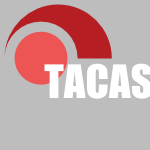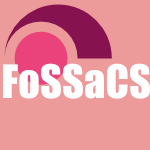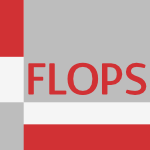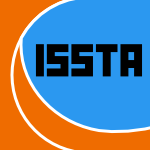219 papers:
 TACAS-2015-Wijs #branch #gpu #similarity
TACAS-2015-Wijs #branch #gpu #similarity- GPU Accelerated Strong and Branching Bisimilarity Checking (AW), pp. 368–383.
 STOC-2015-BackursI #distance #edit distance
STOC-2015-BackursI #distance #edit distance- Edit Distance Cannot Be Computed in Strongly Subquadratic Time (unless SETH is false) (AB, PI), pp. 51–58.
 ICALP-v1-2015-HenzingerKL #component #polynomial
ICALP-v1-2015-HenzingerKL #component #polynomial- Finding 2-Edge and 2-Vertex Strongly Connected Components in Quadratic Time (MH, SK, VL), pp. 713–724.
 ICALP-v2-2015-FeldmanF #clustering #framework #game studies
ICALP-v2-2015-FeldmanF #clustering #framework #game studies- A Unified Framework for Strong Price of Anarchy in Clustering Games (MF, OF), pp. 601–613.
 ICML-2015-DanielyGS #adaptation #learning #online
ICML-2015-DanielyGS #adaptation #learning #online- Strongly Adaptive Online Learning (AD, AG, SSS), pp. 1405–1411.
 ICML-2015-GarberH #performance #set
ICML-2015-GarberH #performance #set- Faster Rates for the Frank-Wolfe Method over Strongly-Convex Sets (DG, EH), pp. 541–549.
 ICML-2015-LondonHG #approximate #learning
ICML-2015-LondonHG #approximate #learning- The Benefits of Learning with Strongly Convex Approximate Inference (BL, BH, LG), pp. 410–418.
 ESEC-FSE-2015-ZhangM #correlation #effectiveness #testing
ESEC-FSE-2015-ZhangM #correlation #effectiveness #testing- Assertions are strongly correlated with test suite effectiveness (YZ, AM), pp. 214–224.
 HPCA-2015-KimSE #flexibility #memory management #reliability
HPCA-2015-KimSE #flexibility #memory management #reliability- Bamboo ECC: Strong, safe, and flexible codes for reliable computer memory (JK, MS, ME), pp. 101–112.
 PPoPP-2015-ZhangHCB #memory management #semantics #transaction
PPoPP-2015-ZhangHCB #memory management #semantics #transaction- Low-overhead software transactional memory with progress guarantees and strong semantics (MZ, JH, MC, MDB), pp. 97–108.
 ASE-2014-HagiharaESY #satisfiability #set #specification
ASE-2014-HagiharaESY #satisfiability #set #specification- Minimal strongly unsatisfiable subsets of reactive system specifications (SH, NE, MS, NY), pp. 629–634.
 ASE-2014-HarmanJMP #effectiveness #empirical #higher-order #performance
ASE-2014-HarmanJMP #effectiveness #empirical #higher-order #performance- Angels and monsters: an empirical investigation of potential test effectiveness and efficiency improvement from strongly subsuming higher order mutation (MH, YJ, PRM, MP), pp. 397–408.
 VLDB-2014-LiLWB #in the cloud #performance #privacy #query
VLDB-2014-LiLWB #in the cloud #performance #privacy #query- Fast Range Query Processing with Strong Privacy Protection for Cloud Computing (RL, AXL, ALW, BB), pp. 1953–1964.
 WRLA-2014-LucasM #order #termination
WRLA-2014-LucasM #order #termination- Strong and Weak Operational Termination of Order-Sorted Rewrite Theories (SL, JM), pp. 178–194.
 STOC-2014-KhotTW #approximate
STOC-2014-KhotTW #approximate- A characterization of strong approximation resistance (SK, MT, PW), pp. 634–643.
 STOC-2014-Vegh #algorithm #polynomial
STOC-2014-Vegh #algorithm #polynomial- A strongly polynomial algorithm for generalized flow maximization (LAV), pp. 644–653.
 ICALP-v1-2014-TulsianiWZ #game studies #graph #parallel #rank
ICALP-v1-2014-TulsianiWZ #game studies #graph #parallel #rank- Optimal Strong Parallel Repetition for Projection Games on Low Threshold Rank Graphs (MT, JW, YZ), pp. 1003–1014.
 ICPR-2014-TaxSRM #performance #type system
ICPR-2014-TaxSRM #performance #type system- The Effect of Aggregating Subtype Performances Depends Strongly on the Performance Measure Used (DMJT, HMJS, MJTR, PDM), pp. 3720–3725.
 KDD-2014-SintosT #network #social #using
KDD-2014-SintosT #network #social #using- Using strong triadic closure to characterize ties in social networks (SS, PT), pp. 1466–1475.
 KR-2014-CabalarD #equivalence
KR-2014-CabalarD #equivalence- Strong Equivalence of Non-Monotonic Temporal Theories (PC, MD).
 SIGIR-2014-IzsakRKT
SIGIR-2014-IzsakRKT- The search duel: a response to a strong ranker (PI, FR, OK, MT), pp. 919–922.
 ICSE-2014-InozemtsevaH #correlation #effectiveness #testing
ICSE-2014-InozemtsevaH #correlation #effectiveness #testing- Coverage is not strongly correlated with test suite effectiveness (LI, RH), pp. 435–445.
 PPoPP-2014-TomkinsSAR #algorithm #component #named #parallel
PPoPP-2014-TomkinsSAR #algorithm #component #named #parallel- SCCMulti: an improved parallel strongly connected components algorithm (DT, TGS, NMA, LR), pp. 393–394.
 CAV-2014-WijsKB #component #composition #graph
CAV-2014-WijsKB #component #composition #graph- GPU-Based Graph Decomposition into Strongly Connected and Maximal End Components (AW, JPK, DB), pp. 310–326.
 STOC-2013-BeckI
STOC-2013-BeckI- Strong ETH holds for regular resolution (CB, RI), pp. 487–494.
 ICALP-v1-2013-MoruzN #algorithm #bound #random
ICALP-v1-2013-MoruzN #algorithm #bound #random- Improved Space Bounds for Strongly Competitive Randomized Paging Algorithms (GM, AN), pp. 757–768.
 ICALP-v2-2013-MertziosS #bound #evolution #network
ICALP-v2-2013-MertziosS #bound #evolution #network- Strong Bounds for Evolution in Networks (GBM, PGS), pp. 669–680.
 CSCW-2013-BurkeK #difference #facebook #using
CSCW-2013-BurkeK #difference #facebook #using- Using facebook after losing a job: differential benefits of strong and weak ties (MB, RK), pp. 1419–1430.
 DUXU-NTE-2013-VilarRNTDF #question
DUXU-NTE-2013-VilarRNTDF #question- Are Emergency Egress Signs Strong Enough to Overlap the Influence of the Environmental Variables? (EV, FR, PN, LT, ED, EF), pp. 205–214.
 ICML-c3-2013-ZhangYJH #optimisation #probability
ICML-c3-2013-ZhangYJH #optimisation #probability- O(logT) Projections for Stochastic Optimization of Smooth and Strongly Convex Functions (LZ, TY, RJ, XH), pp. 1121–1129.
 QAPL-2013-BernardoNL #behaviour #nondeterminism #probability #process
QAPL-2013-BernardoNL #behaviour #nondeterminism #probability #process- The Spectrum of Strong Behavioral Equivalences for Nondeterministic and Probabilistic Processes (MB, RDN, ML), pp. 81–96.
 SAC-2013-HongJ #named #network #object-oriented #programming language
SAC-2013-HongJ #named #network #object-oriented #programming language- Meso: an object-oriented programming language for building strongly-typed internet-based network applications (SH, YJJ), pp. 1579–1586.
 ICSE-2013-PolikarpovaF0WM #question #specification #what
ICSE-2013-PolikarpovaF0WM #question #specification #what- What good are strong specifications? (NP, CAF, YP, YW, BM), pp. 262–271.
 CSL-2013-AschieriBB #normalisation
CSL-2013-AschieriBB #normalisation- Realizability and Strong Normalization for a Curry-Howard Interpretation of HA + EM1 (FA, SB, GB), pp. 45–60.
 CSL-2013-Kikuchi #nondeterminism #normalisation #proving #λ-calculus
CSL-2013-Kikuchi #nondeterminism #normalisation #proving #λ-calculus- Proving Strong Normalisation via Non-deterministic Translations into Klop’s Extended λ-Calculus (KK), pp. 395–414.
 CSL-2013-Statman #normalisation
CSL-2013-Statman #normalisation- A New Type Assignment for Strongly Normalizable Terms (RS), pp. 634–652.
 RTA-2013-Accattoli #linear #logic #normalisation
RTA-2013-Accattoli #linear #logic #normalisation- Linear Logic and Strong Normalization (BA), pp. 39–54.
 TLCA-2013-AschieriZ #nondeterminism #normalisation
TLCA-2013-AschieriZ #nondeterminism #normalisation- Non-determinism, Non-termination and the Strong Normalization of System T (FA, MZ), pp. 31–47.
 STOC-2012-FioriniMPTW #bound #exponential #linear
STOC-2012-FioriniMPTW #bound #exponential #linear- Linear vs. semidefinite extended formulations: exponential separation and strong lower bounds (SF, SM, SP, HRT, RdW), pp. 95–106.
 STOC-2012-Vegh #algorithm #low cost #polynomial #problem
STOC-2012-Vegh #algorithm #low cost #polynomial #problem- Strongly polynomial algorithm for a class of minimum-cost flow problems with separable convex objectives (LAV), pp. 27–40.
 CIAA-2012-DrosteP #automaton #logic #word
CIAA-2012-DrosteP #automaton #logic #word- Weighted Nested Word Automata and Logics over Strong Bimonoids (MD, BP), pp. 138–148.
 LATA-2012-Bozzelli #abstraction #constraints #termination
LATA-2012-Bozzelli #abstraction #constraints #termination- Strong Termination for Gap-Order Constraint Abstractions of Counter Systems (LB), pp. 155–168.
 ICML-2012-RakhlinSS #optimisation #probability
ICML-2012-RakhlinSS #optimisation #probability- Making Gradient Descent Optimal for Strongly Convex Stochastic Optimization (AR, OS, KS), p. 204.
 KR-2012-FaberTW #equivalence #optimisation #problem
KR-2012-FaberTW #equivalence #optimisation #problem- Strong Equivalence of Qualitative Optimization Problems (WF, MT, SW).
 KR-2012-WangZZZ #equivalence #logic programming #source code
KR-2012-WangZZZ #equivalence #logic programming #source code- Forgetting in Logic Programs under Strong Equivalence (YW, YZ, YZ, MZ).
 ECOOP-2012-DeD #analysis #java #pointer #scalability
ECOOP-2012-DeD #analysis #java #pointer #scalability- Scalable Flow-Sensitive Pointer Analysis for Java with Strong Updates (AD, DD), pp. 665–687.
 OSDI-2012-WolinskyCFJ
OSDI-2012-WolinskyCFJ- Dissent in Numbers: Making Strong Anonymity Scale (DIW, HCG, BF, AJ), pp. 179–182.
 ICST-2012-FraserA #search-based #testing
ICST-2012-FraserA #search-based #testing- The Seed is Strong: Seeding Strategies in Search-Based Software Testing (GF, AA), pp. 121–130.
 IJCAR-2012-BruttomessoGR #composition #quantifier
IJCAR-2012-BruttomessoGR #composition #quantifier- From Strong Amalgamability to Modularity of Quantifier-Free Interpolation (RB, SG, SR), pp. 118–133.
 LICS-2012-CoeckeDKW #category theory #quantum
LICS-2012-CoeckeDKW #category theory #quantum- Strong Complementarity and Non-locality in Categorical Quantum Mechanics (BC, RD, AK, QW), pp. 245–254.
 SAT-2012-GaspersS #satisfiability
SAT-2012-GaspersS #satisfiability- Strong Backdoors to Nested Satisfiability (SG, SS), pp. 72–85.
 ICDAR-2011-Baird #documentation #modelling #recognition
ICDAR-2011-Baird #documentation #modelling #recognition- Document Recognition without Strong Models (HSB), pp. 414–423.
 FoSSaCS-2011-BernadetL #complexity #normalisation
FoSSaCS-2011-BernadetL #complexity #normalisation- Complexity of Strongly Normalising λ-Terms via Non-idempotent Intersection Types (AB, SL), pp. 88–107.
 ICSM-2011-SoaresMG #identification #implementation #refactoring
ICSM-2011-SoaresMG #identification #implementation #refactoring- Identifying overly strong conditions in refactoring implementations (GS, MM, RG), pp. 173–182.
 STOC-2011-MahdianY #approach #online #random
STOC-2011-MahdianY #approach #online #random- Online bipartite matching with random arrivals: an approach based on strongly factor-revealing LPs (MM, QY), pp. 597–606.
 STOC-2011-Sherstov #communication #complexity #quantum #query #theorem
STOC-2011-Sherstov #communication #complexity #quantum #query #theorem- Strong direct product theorems for quantum communication and query complexity (AAS), pp. 41–50.
 POPL-2011-LhotakC #analysis #performance #points-to
POPL-2011-LhotakC #analysis #performance #points-to- Points-to analysis with efficient strong updates (OL, KCAC), pp. 3–16.
 SAC-2011-AccorsiW #modelling #workflow
SAC-2011-AccorsiW #modelling #workflow- Strong non-leak guarantees for workflow models (RA, CW), pp. 308–314.
 ESEC-FSE-2011-HarmanJL #generative #higher-order #testing
ESEC-FSE-2011-HarmanJL #generative #higher-order #testing- Strong higher order mutation-based test data generation (MH, YJ, WBL), pp. 212–222.
 SOSP-2011-CalderWONSMXSWSHUKEBMAAHHBDAMSMR #consistency
SOSP-2011-CalderWONSMXSWSHUKEBMAAHHBDAMSMR #consistency- Windows Azure Storage: a highly available cloud storage service with strong consistency (BC, JW, AO, NN, AS, SM, YX, SS, JW, HS, JH, CU, HK, AE, VB, SM, RA, AA, MFuH, MIuH, DB, SD, AA, MM, SS, KM, LR), pp. 143–157.
 ICLP-2011-BochmanL #equivalence
ICLP-2011-BochmanL #equivalence- Yet Another Characterization of Strong Equivalence (AB, VL), pp. 11–15.
 VLDB-2010-PapadopoulosBP #nearest neighbour #privacy
VLDB-2010-PapadopoulosBP #nearest neighbour #privacy- Nearest Neighbor Search with Strong Location Privacy (SP, SB, DP), pp. 619–629.
 ESOP-2010-DilligDA
ESOP-2010-DilligDA- Fluid Updates: Beyond Strong vs. Weak Updates (ID, TD, AA), pp. 246–266.
 STOC-2010-Klauck #theorem
STOC-2010-Klauck #theorem- A strong direct product theorem for disjointness (HK), pp. 77–86.
 LATA-2010-BousquetL #ambiguity #automaton #equivalence #problem
LATA-2010-BousquetL #ambiguity #automaton #equivalence #problem- Equivalence and Inclusion Problem for Strongly Unambiguous Büchi Automata (NB, CL), pp. 118–129.
 ICPR-2010-Martin-HerreroF #classification #question
ICPR-2010-Martin-HerreroF #classification #question- Tensor-Driven Hyperspectral Denoising: A Strong Link for Classification Chains? (JMH, MFA), pp. 2820–2823.
 KR-2010-GiacomoPS #constraints
KR-2010-GiacomoPS #constraints- Generalized Planning with Loops under Strong Fairness Constraints (GDG, FP, SS).
 KR-2010-OikarinenW #equivalence #framework
KR-2010-OikarinenW #equivalence #framework- Characterizing Strong Equivalence for Argumentation Frameworks (EO, SW).
 RecSys-2010-MarxHM #algorithm #comprehension #hybrid #recommendation
RecSys-2010-MarxHM #algorithm #comprehension #hybrid #recommendation- Increasing consumers’ understanding of recommender results: a preference-based hybrid algorithm with strong explanatory power (PM, THT, AM), pp. 297–300.
 PPoPP-2010-UpadhyayaMP #data type #generative #performance #using
PPoPP-2010-UpadhyayaMP #data type #generative #performance #using- Using data structure knowledge for efficient lock generation and strong atomicity (GU, SPM, VSP), pp. 281–292.
 LICS-2010-AvronAZ #logic #on the
LICS-2010-AvronAZ #logic #on the- On Strong Maximality of Paraconsistent Finite-Valued Logics (AA, OA, AZ), pp. 304–313.
 LICS-2010-PopescuGO #normalisation #system f
LICS-2010-PopescuGO #normalisation #system f- Strong Normalization for System F by HOAS on Top of FOAS (AP, ELG, CJO), pp. 31–40.
 PODS-2009-BerindeCIS #bound #fault
PODS-2009-BerindeCIS #bound #fault- Space-optimal heavy hitters with strong error bounds (RB, GC, PI, MJS), pp. 157–166.
 WRLA-2008-Rodriguez09
WRLA-2008-Rodriguez09- Combining Techniques to Reduce State Space and Prove Strong Properties (DER), pp. 267–280.
 DLT-2009-Egecioglu #approximate #context-free grammar
DLT-2009-Egecioglu #approximate #context-free grammar- Strongly Regular Grammars and Regular Approximation of Context-Free Languages (ÖE), pp. 207–220.
 ICALP-v1-2009-ChienS #game studies
ICALP-v1-2009-ChienS #game studies- Strong and Pareto Price of Anarchy in Congestion Games (SC, AS), pp. 279–291.
 ICALP-v1-2009-Nies #traceability
ICALP-v1-2009-Nies #traceability- Superhighness and Strong Jump Traceability (AN), pp. 726–737.
 POPL-2009-BronsonKO #optimisation
POPL-2009-BronsonKO #optimisation- Feedback-directed barrier optimization in a strongly isolated STM (NGB, CK, KO), pp. 213–225.
 PPoPP-2009-AbadiHM #hardware #memory management #off the shelf #transaction #using
PPoPP-2009-AbadiHM #hardware #memory management #off the shelf #transaction #using- Transactional memory with strong atomicity using off-the-shelf memory protection hardware (MA, TH, MM), pp. 185–196.
 VMCAI-2009-JurdzinskiLR #automaton #game studies #hybrid
VMCAI-2009-JurdzinskiLR #automaton #game studies #hybrid- Average-Price-per-Reward Games on Hybrid Automata with Strong Resets (MJ, RL, MR), pp. 167–181.
 FoSSaCS-2008-KikuchiL #normalisation
FoSSaCS-2008-KikuchiL #normalisation- Strong Normalisation of Cut-Elimination That Simulates β-Reduction (KK, SL), pp. 380–394.
 DLT-2008-CarpiD #automaton #problem #transitive
DLT-2008-CarpiD #automaton #problem #transitive- The Synchronization Problem for Strongly Transitive Automata (AC, FD), pp. 240–251.
 FM-2008-ChalinR #fault #ml #performance #runtime #using
FM-2008-ChalinR #fault #ml #performance #runtime #using- JML Runtime Assertion Checking: Improved Error Reporting and Efficiency Using Strong Validity (PC, FR), pp. 246–261.
 KR-2008-FaberTW #equivalence #logic programming #order #source code
KR-2008-FaberTW #equivalence #logic programming #order #source code- Notions of Strong Equivalence for Logic Programs with Ordered Disjunction (WF, HT, SW), pp. 433–443.
 KR-2008-VassosLL #first-order
KR-2008-VassosLL #first-order- First-Order Strong Progression for Local-Effect Basic Action Theories (SV, GL, HJL), pp. 662–672.
 OOPSLA-2008-SchneiderMSA #optimisation #performance
OOPSLA-2008-SchneiderMSA #optimisation #performance- Dynamic optimization for efficient strong atomicity (FTS, VM, TS, ARAT), pp. 181–194.
 SAC-2008-DegesysBR #random
SAC-2008-DegesysBR #random- Synchronization of strongly pulse-coupled oscillators with refractory periods and random medium access (JD, PB, JR), pp. 1976–1980.
 FSE-2008-FischbeinU #behaviour #modelling #on the
FSE-2008-FischbeinU #behaviour #modelling #on the- On correct and complete strong merging of partial behaviour models (DF, SU), pp. 297–307.
 HT-2007-CanosSPL #design #process
HT-2007-CanosSPL #design #process- Strong vs. weak links: making processes prevail over structure in navigational design (JHC, CS, MdCP, ML), pp. 139–140.
 ICALP-2007-FiatKLO
ICALP-2007-FiatKLO- Strong Price of Anarchy for Machine Load Balancing (AF, HK, ML, SO), pp. 583–594.
 SEFM-2007-DengRH #algorithm #execution #object-oriented #source code #symbolic computation #towards
SEFM-2007-DengRH #algorithm #execution #object-oriented #source code #symbolic computation #towards- Towards A Case-Optimal Symbolic Execution Algorithm for Analyzing Strong Properties of Object-Oriented Programs (XD, R, JH), pp. 273–282.
 LICS-2007-Riba #interactive #normalisation
LICS-2007-Riba #interactive #normalisation- Strong Normalization as Safe Interaction (CR), pp. 13–22.
 RTA-2007-Kikuchi #calculus #normalisation #proving
RTA-2007-Kikuchi #calculus #normalisation #proving- Simple Proofs of Characterizing Strong Normalization for Explicit Substitution Calculi (KK), pp. 257–272.
 TLCA-2007-Abel #induction #normalisation
TLCA-2007-Abel #induction #normalisation- Strong Normalization and Equi-(Co)Inductive Types (AA0), pp. 8–22.
 TLCA-2007-DavidN #calculus #equation #normalisation #proving #recursion
TLCA-2007-DavidN #calculus #equation #normalisation #proving #recursion- An Arithmetical Proof of the Strong Normalization for the λ -Calculus with Recursive Equations on Types (RD, KN), pp. 84–101.
 TLCA-2007-SantoMP #calculus #continuation #normalisation
TLCA-2007-SantoMP #calculus #continuation #normalisation- Continuation-Passing Style and Strong Normalisation for Intuitionistic Sequent Calculi (JES, RM, LP), pp. 133–147.
 ASE-2006-DengLR #bound #execution #named #symbolic computation
ASE-2006-DengLR #bound #execution #named #symbolic computation- Bogor/Kiasan: A k-bounded Symbolic Execution for Checking Strong Heap Properties of Open Systems (XD, JL, R), pp. 157–166.
 DATE-2006-JinS #analysis #satisfiability
DATE-2006-JinS #analysis #satisfiability- Strong conflict analysis for propositional satisfiability (HJ, FS), pp. 818–823.
 FoSSaCS-2006-PaoliniPR #normalisation
FoSSaCS-2006-PaoliniPR #normalisation- An Operational Characterization of Strong Normalization (LP, EP, SRDR), pp. 367–381.
 EDOC-2006-WangensteenLJD #authentication #enterprise
EDOC-2006-WangensteenLJD #authentication #enterprise- Secured enterprise access with strong SIM authentication (AW, LL, IJ, TvD), pp. 463–466.
 KR-2006-Truszczynski #algebra #approach #equivalence
KR-2006-Truszczynski #algebra #approach #equivalence- Strong and Uniform Equivalence of Nonmonotonic Theories — An Algebraic Approach (MT), pp. 389–399.
 SAC-2006-CabriFLQ
SAC-2006-CabriFLQ- Strong agent mobility for aglets based on the IBM JikesRVM (GC, LF, LL, RQ), pp. 90–95.
 IJCAR-2006-DyckhoffKL #bound #calculus #logic
IJCAR-2006-DyckhoffKL #bound #calculus #logic- Strong Cut-Elimination Systems for Hudelmaier’s Depth-Bounded Sequent Calculus for Implicational Logic (RD, DK, SL), pp. 347–361.
 LICS-2006-CoquandS #normalisation #proving #using
LICS-2006-CoquandS #normalisation #proving #using- A Proof of Strong Normalisation using Domain Theory (TC, AS), pp. 307–316.
 VMCAI-2006-RanzatoT #abstract interpretation
VMCAI-2006-RanzatoT #abstract interpretation- Strong Preservation of Temporal Fixpoint-Based Operators by Abstract Interpretation (FR, FT), pp. 332–347.
 VMCAI-2006-SankaranarayananCSM #analysis #performance #relational
VMCAI-2006-SankaranarayananCSM #analysis #performance #relational- Efficient Strongly Relational Polyhedral Analysis (SS, MC, HBS, ZM), pp. 111–125.
 TACAS-2005-RanzatoT #abstract interpretation #algorithm #refinement
TACAS-2005-RanzatoT #abstract interpretation #algorithm #refinement- An Abstract Interpretation-Based Refinement Algorithm for Strong Preservation (FR, FT), pp. 140–156.
 STOC-2005-AlekhnovichAT #towards
STOC-2005-AlekhnovichAT #towards- Towards strong nonapproximability results in the Lovasz-Schrijver hierarchy (MA, SA, IT), pp. 294–303.
 CIAA-2005-Bartha #equivalence
CIAA-2005-Bartha #equivalence- Strong Retiming Equivalence of Synchronous Schemes (MB), pp. 66–77.
 CHI-2005-VetereGKHMPMB #design
CHI-2005-VetereGKHMPMB #design- Mediating intimacy: designing technologies to support strong-tie relationships (FV, MRG, JK, SH, FM, SP, KM, MB), pp. 471–480.
 CIKM-2005-ZhangGLTW
CIKM-2005-ZhangGLTW- Discovering strong skyline points in high dimensional spaces (ZZ, XG, HL, AKHT, NW), pp. 247–248.
 SAC-2005-KinatederTR #alias #communication #peer-to-peer
SAC-2005-KinatederTR #alias #communication #peer-to-peer- Strong pseudonymous communication for peer-to-peer reputation systems (MK, RT, KR), pp. 1570–1576.
 CSL-2005-Berger #normalisation #theorem
CSL-2005-Berger #normalisation #theorem- An Abstract Strong Normalization Theorem (UB), pp. 27–35.
 ICLP-2005-NomikosRW #equivalence #semantics
ICLP-2005-NomikosRW #equivalence #semantics- A Sufficient Condition for Strong Equivalence Under the Well-Founded Semantics (CN, PR, WWW), pp. 414–415.
 TLCA-2005-DavidN #normalisation #proving #symmetry #λ-calculus #μ-calculus
TLCA-2005-DavidN #normalisation #proving #symmetry #λ-calculus #μ-calculus- Arithmetical Proofs of Strong Normalization Results for the Symmetric λμ-Calculus (RD, KN), pp. 162–178.
 ESOP-2004-RanzatoT #abstract interpretation
ESOP-2004-RanzatoT #abstract interpretation- Strong Preservation as Completeness in Abstract Interpretation (FR, FT), pp. 18–32.
 FoSSaCS-2004-Polonovski #calculus #normalisation #μ-calculus
FoSSaCS-2004-Polonovski #calculus #normalisation #μ-calculus- Strong Normalization of λμμ-Calculus with Explicit Substitutions (EP), pp. 423–437.
 FoSSaCS-2004-WischikG #bisimulation #calculus
FoSSaCS-2004-WischikG #bisimulation #calculus- Strong Bisimulation for the Explicit Fusion Calculus (LW, PG), pp. 484–498.
 TACAS-2004-RobbyRDH #framework #model checking #specification #using
TACAS-2004-RobbyRDH #framework #model checking #specification #using- Checking Strong Specifications Using an Extensible Software Model Checking Framework (R, ER, MBD, JH), pp. 404–420.
 FLOPS-2004-Kikuchi #calculus #normalisation #proving
FLOPS-2004-Kikuchi #calculus #normalisation #proving- A Direct Proof of Strong Normalization for an Extended Herbelin?s Calculus (KK), pp. 244–259.
 EDOC-2004-HoffnerFF #flexibility #type system
EDOC-2004-HoffnerFF #flexibility #type system- Strong and Flexible Domain Typing for Dynamic E-Business (YH, SF, CF), pp. 98–107.
 ICPR-v2-2004-TabboneW04a #graph #image #relational
ICPR-v2-2004-TabboneW04a #graph #image #relational- Retrieving Images by Content from Strong Relational Graph Matching (ST, LW), pp. 951–954.
 ICPR-v3-2004-EhtiatiC #architecture #identification
ICPR-v3-2004-EhtiatiC #architecture #identification- A Strongly Coupled Architecture for Contextual Object and Scene Identification (TE, JJC), pp. 69–72.
 KDD-2004-XiongSTK #bound #correlation #identification
KDD-2004-XiongSTK #bound #correlation #identification- Exploiting a support-based upper bound of Pearson’s correlation coefficient for efficiently identifying strongly correlated pairs (HX, SS, PNT, VK), pp. 334–343.
 PPDP-2004-DoughertyGL #normalisation
PPDP-2004-DoughertyGL #normalisation- Characterizing strong normalization in a language with control operators (DJD, SG, PL), pp. 155–166.
 DATE-2003-MoullecADAP #metric #multi #personalisation
DATE-2003-MoullecADAP #metric #multi #personalisation- Multi-Granularity Metrics for the Era of Strongly Personalized SOCs (YLM, NBA, JPD, MA, JLP), pp. 10674–10681.
 GPCE-2003-SaraivaS #attribute grammar #generative #tool support
GPCE-2003-SaraivaS #attribute grammar #generative #tool support- Generating Spreadsheet-Like Tools from Strong Attribute Grammars (JS, SDS), pp. 307–323.
 CSL-2003-DavidG #normalisation #λ-calculus
CSL-2003-DavidG #normalisation #λ-calculus- Strong Normalization of the Typed λws-Calculus (RD, BG), pp. 155–168.
 CSL-2003-Miquel #normalisation #set
CSL-2003-Miquel #normalisation #set- A Strongly Normalising Curry-Howard Correspondence for IZF Set Theory (AM), pp. 441–454.
 LICS-2003-Jancar #parallel #process #similarity
LICS-2003-Jancar #parallel #process #similarity- Strong Bisimilarity on Basic Parallel Processes is PSPACE-complete (PJ), p. 218–?.
 TLCA-2003-Boudol #normalisation #on the
TLCA-2003-Boudol #normalisation #on the- On Strong Normalization in the Intersection Type Discipline (GB), pp. 60–74.
 SAS-2002-NielsonNS #horn clause #normalisation
SAS-2002-NielsonNS #horn clause #normalisation- Normalizable Horn Clauses, Strongly Recognizable Relations, and Spi (FN, HRN, HS), pp. 20–35.
 SAS-2002-RanzatoT #model checking
SAS-2002-RanzatoT #model checking- Making Abstract Model Checking Strongly Preserving (FR, FT), pp. 411–427.
 ICALP-2002-Srba #algebra #process #similarity
ICALP-2002-Srba #algebra #process #similarity- Strong Bisimilarity and Regularity of Basic Process Algebra Is PSPACE-Hard (JS), pp. 716–727.
 ICALP-2002-Uehara #algorithm #graph #linear
ICALP-2002-Uehara #algorithm #graph #linear- Linear Time Algorithms on Chordal Bipartite and Strongly Chordal Graphs (RU), pp. 993–1004.
 ICFP-2002-GregoireL #implementation #reduction
ICFP-2002-GregoireL #implementation #reduction- A compiled implementation of strong reduction (BG, XL), pp. 235–246.
 IFL-2002-WeeldenP #functional #operating system #towards
IFL-2002-WeeldenP #functional #operating system #towards- Towards a Strongly Typed Functional Operating System (AvW, MJP), pp. 215–231.
 ICPR-v1-2002-YuanGYW #modelling #recognition
ICPR-v1-2002-YuanGYW #modelling #recognition- Recognition of Strong and Weak Connection Models in Continuous Sign Language (QY, WG, HY, CW), pp. 75–78.
 KDD-2002-JoshiAK #predict #question
KDD-2002-JoshiAK #predict #question- Predicting rare classes: can boosting make any weak learner strong? (MVJ, RCA, VK), pp. 297–306.
 KR-2002-Lin #equivalence #logic programming #source code
KR-2002-Lin #equivalence #logic programming #source code- Reducing Strong Equivalence of Logic Programs to Entailment in Classical Propositional Logic (FL), pp. 170–176.
 OOPSLA-2002-BjornssonS #collaboration #named
OOPSLA-2002-BjornssonS #collaboration #named- BuddyCache: high-performance object storage for collaborative strong-consistency applications in a WAN (MEB, LS), pp. 26–39.
 LICS-2001-Terui #calculus #normalisation
LICS-2001-Terui #calculus #normalisation- Light Affine Calculus and Polytime Strong Normalization (KT), pp. 209–220.
 LICS-2001-YoshidaBH #normalisation #π-calculus
LICS-2001-YoshidaBH #normalisation #π-calculus- Strong Normalisation in the π-Calculus (NY, MB, KH), pp. 311–322.
 TLCA-2001-Groote #deduction #normalisation
TLCA-2001-Groote #deduction #normalisation- Strong Normalization of Classical Natural Deduction with Disjunction (PdG), pp. 182–196.
 TLCA-2001-Urban #normalisation
TLCA-2001-Urban #normalisation- Strong Normalisation for a Gentzen-like Cut-Elimination Procedure (CU), pp. 415–430.
 SAS-2000-FinkKS #analysis #array
SAS-2000-FinkKS #analysis #array- Unified Analysis of Array and Object References in Strongly Typed Languages (SJF, KK, VS), pp. 155–174.
 STOC-2000-IwataFF #algorithm #combinator #polynomial
STOC-2000-IwataFF #algorithm #combinator #polynomial- A combinatorial, strongly polynomial-time algorithm for minimizing submodular functions (SI, LF, SF), pp. 97–106.
 STOC-2000-Srinivasan #clique
STOC-2000-Srinivasan #clique- The value of strong inapproximability results for clique (AS), pp. 144–152.
 ICALP-2000-ElkinP #problem
ICALP-2000-ElkinP #problem- Strong Inapproximability of the Basic k-Spanner Problem (ME, DP), pp. 636–647.
 ICPR-v1-2000-Nagel #evaluation #image #sequence
ICPR-v1-2000-Nagel #evaluation #image #sequence- Image Sequence Evaluation: 30 Years and Still Going Strong (HHN), pp. 1149–1158.
 SAIG-2000-Makholm #on the
SAIG-2000-Makholm #on the- On Jones-Optimal Specialization for Strongly Typed Languages (HM), pp. 129–148.
 FoSSaCS-1999-ArruabarrenaLN #embedded #logic programming
FoSSaCS-1999-ArruabarrenaLN #embedded #logic programming- A Strong Logic Programming View for Static Embedded Implications (RA, PL, MN), pp. 56–72.
 TACAS-1999-LiC #bisimulation #congruence #process
TACAS-1999-LiC #bisimulation #congruence #process- Computing Strong/Weak Bisimulation Equivalences and Observation Congruence for Value-Passing Processes (ZL, HC), pp. 300–314.
 DLT-1999-RuizG
DLT-1999-RuizG- Right and left strongly locally testable semigroups and languages (JR, PG), pp. 232–241.
 ICML-1999-Harries
ICML-1999-Harries- Boosting a Strong Learner: Evidence Against the Minimum Margin (MBH), pp. 171–180.
 RTA-1999-CosmoG #normalisation #proving
RTA-1999-CosmoG #normalisation #proving- Strong Normalization of Proof Nets Modulo Structural Congruences (RDC, SG), pp. 75–89.
 RTA-1999-Groote #deduction #normalisation #on the
RTA-1999-Groote #deduction #normalisation #on the- On the Strong Normalisation of Natural Deduction with Permutation-Conversions (PdG), pp. 45–59.
 TLCA-1999-UrbanB #logic #normalisation
TLCA-1999-UrbanB #logic #normalisation- Strong Normalisation of Cut-Elimination in Classical Logic (CU, GMB), pp. 365–380.
 DATE-1998-RunjeK #encryption #implementation
DATE-1998-RunjeK #encryption #implementation- Universal Strong Encryption FPGA Core Implementation (DR, MK), pp. 923–924.
 HT-1998-FurtadoM #flexibility #hypermedia #type system
HT-1998-FurtadoM #flexibility #hypermedia #type system- Enforcing Strong Object Typing in Flexible Hypermedia (PF, HM), pp. 171–179.
 STOC-1998-LinialSW #algorithm #approximate #matrix #polynomial #scalability
STOC-1998-LinialSW #algorithm #approximate #matrix #polynomial #scalability- A Deterministic Strongly Polynomial Algorithm for Matrix Scaling and Approximate Permanents (NL, AS, AW), pp. 644–652.
 ICALP-1998-LiC #bisimulation #congruence #π-calculus
ICALP-1998-LiC #bisimulation #congruence #π-calculus- Checking Strong/Weak Bisimulation Equivalences and Observation Congruence for the π-Calculus (ZL, HC), pp. 707–718.
 CSL-1998-Matthes #fixpoint #normalisation
CSL-1998-Matthes #fixpoint #normalisation- Monotone Fixed-Point Types and Strong Normalization (RM), pp. 298–312.
 EDTC-1997-SchollMHM #symmetry
EDTC-1997-SchollMHM #symmetry- Minimizing ROBDD sizes of incompletely specified Boolean functionsby exploiting strong symmetries (CS, SM, GH, PM), pp. 229–234.
 ICFP-1997-DimockMTW #representation
ICFP-1997-DimockMTW #representation- Strongly Typed Flow-Directed Representation Transformations (AD, RM, FAT, JBW), pp. 11–24.
 CAV-1997-BoigelotBR #analysis #hybrid #linear #reachability
CAV-1997-BoigelotBR #analysis #hybrid #linear #reachability- An Improved Reachability Analysis Method for Strongly Linear Hybrid Systems (Extended Abstract) (BB, LB, SR), pp. 167–178.
 ICLP-1997-BelleghemDS #logic #logic programming
ICLP-1997-BelleghemDS #logic #logic programming- A Strong Correspondence between Description Logics and Open Logic Programming (KVB, MD, DDS), pp. 346–360.
 LICS-1997-CosmoK #normalisation #proving
LICS-1997-CosmoK #normalisation #proving- Strong Normalization of Explicit Substitutions via Cut Elimination in Proof Nets (Extended Abstract) (RDC, DK), pp. 35–46.
 TLCA-1997-Akama #normalisation
TLCA-1997-Akama #normalisation- A λ-to-CL Translation for Strong Normalization (YA), pp. 1–10.
 TLCA-1997-Xi #normalisation #λ-calculus
TLCA-1997-Xi #normalisation #λ-calculus- Weak and Strong β Normalisations in Typed λ-Calculi (HX), pp. 390–404.
 ESOP-1996-Bechet #encoding #partial evaluation #using
ESOP-1996-Bechet #encoding #partial evaluation #using- Removing Value Encoding Using Alternative Values in Partial Evaluation of Strongly-Typed Languages (DB), pp. 77–91.
 STOC-1996-Spielman #graph #morphism #performance #testing
STOC-1996-Spielman #graph #morphism #performance #testing- Faster Isomorphism Testing of Strongly Regular Graphs (DAS), pp. 576–584.
 KDD-1996-KramerP #performance
KDD-1996-KramerP #performance- Efficient Search for Strong Partial Determinations (SK, BP), pp. 371–374.
 KR-1996-Borgo #congruence
KR-1996-Borgo #congruence- A Pointless Theory of Space Based on Strong Connection and Congruence (SB, NG, CM), pp. 220–229.
 ALP-1996-FerreiraKP #composition #normalisation #λ-calculus
ALP-1996-FerreiraKP #composition #normalisation #λ-calculus- λ-Calculi with Explicit Substitutions and Composition Which Preserve β-Strong Normalization (MCFF, DK, LP), pp. 284–298.
 LICS-1996-Munoz #calculus #confluence #normalisation
LICS-1996-Munoz #calculus #confluence #normalisation- Confluence and Preservation of Strong Normalisation in an Explicit Substitutions Calculus (CAM), pp. 440–447.
 RTA-1996-BlooR #combinator #reduction
RTA-1996-BlooR #combinator #reduction- Combinatory Reduction Systems with Explicit Substitution that Preserve Strong Nomalisation (RB, KHR), pp. 169–183.
 RTA-1996-SakaiT #semantics #term rewriting
RTA-1996-SakaiT #semantics #term rewriting- Semantics and Strong Sequentiality of Priority Term Rewriting Systems (MS, YT), pp. 377–391.
 FPLE-1995-Turner #functional #programming
FPLE-1995-Turner #functional #programming- Elementary Strong Functional Programming (DAT), pp. 1–13.
 LICS-1995-KfouryW #normalisation #proving #reduction #semantics #λ-calculus
LICS-1995-KfouryW #normalisation #proving #reduction #semantics #λ-calculus- New Notions of Reduction and Non-Semantic Proofs of β-Strong Normalization in Typed λ-Calculi (AJK, JBW), pp. 311–321.
 ESOP-1994-Fradet #compilation #reduction
ESOP-1994-Fradet #compilation #reduction- Compilation of Head and Strong Reduction (PF), pp. 211–224.
 LFP-1994-AdityaFH #garbage collection #re-engineering #runtime #using
LFP-1994-AdityaFH #garbage collection #re-engineering #runtime #using- Garbage Collection for Strongly-Typed Languages Using Run-Time Type Reconstruction (SA, CHF, JEH), pp. 12–23.
 CADE-1994-KerberK #logic
CADE-1994-KerberK #logic- A Mechanization of Strong Kleene Logic for Partial Functions (MK, MK), pp. 371–385.
 CADE-1994-Massacci #logic
CADE-1994-Massacci #logic- Strongly Analytic Tableaux for Normal Modal Logics (FM), pp. 723–737.
 LICS-1994-BarbaneraFG #algebra #composition #confluence #normalisation
LICS-1994-BarbaneraFG #algebra #composition #confluence #normalisation- Modularity of Strong Normalization and Confluence in the algebraic-λ-Cube (FB, MF, HG), pp. 406–415.
 LICS-1994-ColsonE #higher-order #on the
LICS-1994-ColsonE #higher-order #on the- On Strong Stability and Higher-Order Sequentiality (LC, TE), pp. 103–108.
 DLT-1993-Istrate #equivalence
DLT-1993-Istrate #equivalence- The Strong Equivalence of ETOL Grammars (GI), pp. 81–89.
 ICALP-1993-HeideOW #adaptation
ICALP-1993-HeideOW #adaptation- Strongly Adaptive Token Distribution (FMadH, BO, RW), pp. 398–409.
 CSL-1993-OngR #calculus #normalisation
CSL-1993-OngR #calculus #normalisation- A Generic Strong Normalization Argument: Application to the Calculus of Constructions (CHLO, ER), pp. 261–279.
 TLCA-1993-Altenkirch #formal method #normalisation #proving #system f
TLCA-1993-Altenkirch #formal method #normalisation #proving #system f- A Formalization of the Strong Normalization Proof for System F in LEGO (TA), pp. 13–28.
 TLCA-1993-HylandO #normalisation #proving
TLCA-1993-HylandO #normalisation #proving- Modified Realizability Toposes and Strong Normalization Proofs (JMEH, CHLO), pp. 179–194.
 ESOP-1992-DohS #action semantics #semantics #type system
ESOP-1992-DohS #action semantics #semantics #type system- Extraction of Strong Typing Laws from Action Semantics Definitions (KGD, DAS), pp. 151–166.
 STOC-1992-Safra #automaton #exponential
STOC-1992-Safra #automaton #exponential- Exponential Determinization for ω-Automata with Strong-Fairness Acceptance Condition (Extended Abstract) (SS), pp. 275–282.
 LICS-1992-Toyama #linear #term rewriting
LICS-1992-Toyama #linear #term rewriting- Strong Sequentiality of Left-Linear Overlapping Term Rewriting Systems (YT), pp. 274–284.
 PLDI-1991-Goldberg #garbage collection #programming language
PLDI-1991-Goldberg #garbage collection #programming language- Tag-Free Garbage Collection for Strongly Typed Programming Languages (BG), pp. 165–176.
 ICALP-1991-BucciarelliE
ICALP-1991-BucciarelliE- Extensional Embedding of a Strongly Stable Model of PCF (AB, TE), pp. 35–46.
 ICALP-1991-HemachandraH
ICALP-1991-HemachandraH- Collapsing Degrees via Strong Computation (Extended Abstract) (LAH, AH), pp. 393–404.
 FPCA-1991-Launchbury #self
FPCA-1991-Launchbury #self- A Strongly-Typed Self-Applicable Partial Evaluator (JL), pp. 145–164.
 KDD-1991-Piatetsky #analysis
KDD-1991-Piatetsky #analysis- Discovery, Analysis, and Presentation of Strong Rules (GPS), pp. 229–248.
 LICS-1991-BucciarelliE
LICS-1991-BucciarelliE- Sequentiality and Strong Stability (AB, TE), pp. 138–145.
 TAV-1991-OffuttL #how #question
TAV-1991-OffuttL #how #question- How Strong is Weak Mutation? (AJO, SDL), pp. 200–213.
 OOPSLA-ECOOP-1990-MadsenMM #object-oriented #revisited #type system
OOPSLA-ECOOP-1990-MadsenMM #object-oriented #revisited #type system- Strong Typing of Object-Oriented Languages Revisited (OLM, BM, BMP), pp. 140–150.
 ALP-1990-Dung #logic programming #on the #source code
ALP-1990-Dung #logic programming #on the #source code- On the strong completion of logic programs (PMD), pp. 158–172.
 WAGA-1990-AttaliC #evaluation #functional #specification
WAGA-1990-AttaliC #evaluation #functional #specification- Functional Evaluation of Strongly Non Circular Typol Specifications (IA, JC), pp. 157–176.
 LICS-1990-SekarR #equation #logic #programming
LICS-1990-SekarR #equation #logic #programming- Programming in Equational Logic: Beyond Strong Sequentiality (RCS, IVR), pp. 230–241.
 STOC-1989-CohenM #algorithm #detection #graph #polynomial
STOC-1989-CohenM #algorithm #detection #graph #polynomial- Strongly Polynomial-Time and NC Algorithms for Detecting Cycles in Dynamic Graphs (Preliminary Version) (EC, NM), pp. 523–534.
 ICALP-1989-TannenG #algebra #confluence #normalisation #polymorphism
ICALP-1989-TannenG #algebra #confluence #normalisation #polymorphism- Polymorphic Rewriting Conserves Algebraic Strong Normalization and Confluence (VT, JHG), pp. 137–150.
 OOPSLA-1989-CanningCHO #interface #object-oriented #programming
OOPSLA-1989-CanningCHO #interface #object-oriented #programming- Interfaces for Strongly-Typed Object-Oriented Programming (PSC, WRC, WLH, WGO), pp. 457–467.
 RTA-1989-SekarPR #execution #parallel #performance #term rewriting
RTA-1989-SekarPR #execution #parallel #performance #term rewriting- Transforming Strongly Sequential Rewrite Systems with Constructors for Efficient parallel Execution (RCS, SP, IVR), pp. 404–418.
 STOC-1988-Orlin #algorithm #performance
STOC-1988-Orlin #algorithm #performance- A Faster Strongly Polynominal Minimum Cost Flow Algorithm (JBO), pp. 377–387.
 STOC-1987-Hemachandra #exponential
STOC-1987-Hemachandra #exponential- The Strong Exponential Hierarchy Collapses (LAH), pp. 110–122.
 ICALP-1986-Fribourg #induction #strict
ICALP-1986-Fribourg #induction #strict- A Strong Restriction of the Inductive Completion Procedure (LF), pp. 105–115.
 LICS-1986-BensonB #automaton #bisimulation
LICS-1986-BensonB #automaton #bisimulation- Strong Bisimulation of State Automata (DBB, OBS), pp. 77–81.
 STOC-1985-Vazirani #communication #complexity #generative #sequence #towards
STOC-1985-Vazirani #communication #complexity #generative #sequence #towards- Towards a Strong Communication Complexity Theory or Generating Quasi-Random Sequences from Two Communicating Slightly-random Sources (Extended Abstract) (UVV), pp. 366–378.
 SCC-1984-Jourdan #attribute grammar #evaluation #recursion
SCC-1984-Jourdan #attribute grammar #evaluation #recursion- Strongly non-circular attribute grammars and their recursive evaluation (MJ), pp. 81–93.
 STOC-1983-GoldwasserMY
STOC-1983-GoldwasserMY- Strong Signature Schemes (SG, SM, ACCY), pp. 431–439.
 ICALP-1983-MycroftN #abstract interpretation #using
ICALP-1983-MycroftN #abstract interpretation #using- Strong Abstract Interpretation Using Power Domains (Extended Abstract) (AM, FN), pp. 536–547.
 STOC-1981-Leivant #complexity #independence #parametricity #polymorphism #programming language #theorem
STOC-1981-Leivant #complexity #independence #parametricity #polymorphism #programming language #theorem- The Complexity of Parameter Passing in Polymorphic Procedures (or: Programming Language Theorems Independent of Very Strong Theories) (DL), pp. 38–45.
 ICALP-1981-Shamir #encryption #generative #on the #pseudo #sequence
ICALP-1981-Shamir #encryption #generative #on the #pseudo #sequence- On the Generation of Cryptographically Strong Pseudo-Random Sequences (AS), pp. 544–550.
 TACAS-2015-Wijs #branch #gpu #similarity
TACAS-2015-Wijs #branch #gpu #similarity STOC-2015-BackursI #distance #edit distance
STOC-2015-BackursI #distance #edit distance ICALP-v1-2015-HenzingerKL #component #polynomial
ICALP-v1-2015-HenzingerKL #component #polynomial ICALP-v2-2015-FeldmanF #clustering #framework #game studies
ICALP-v2-2015-FeldmanF #clustering #framework #game studies ICML-2015-DanielyGS #adaptation #learning #online
ICML-2015-DanielyGS #adaptation #learning #online ICML-2015-GarberH #performance #set
ICML-2015-GarberH #performance #set ICML-2015-LondonHG #approximate #learning
ICML-2015-LondonHG #approximate #learning ESEC-FSE-2015-ZhangM #correlation #effectiveness #testing
ESEC-FSE-2015-ZhangM #correlation #effectiveness #testing HPCA-2015-KimSE #flexibility #memory management #reliability
HPCA-2015-KimSE #flexibility #memory management #reliability PPoPP-2015-ZhangHCB #memory management #semantics #transaction
PPoPP-2015-ZhangHCB #memory management #semantics #transaction ASE-2014-HagiharaESY #satisfiability #set #specification
ASE-2014-HagiharaESY #satisfiability #set #specification ASE-2014-HarmanJMP #effectiveness #empirical #higher-order #performance
ASE-2014-HarmanJMP #effectiveness #empirical #higher-order #performance VLDB-2014-LiLWB #in the cloud #performance #privacy #query
VLDB-2014-LiLWB #in the cloud #performance #privacy #query WRLA-2014-LucasM #order #termination
WRLA-2014-LucasM #order #termination STOC-2014-KhotTW #approximate
STOC-2014-KhotTW #approximate STOC-2014-Vegh #algorithm #polynomial
STOC-2014-Vegh #algorithm #polynomial ICALP-v1-2014-TulsianiWZ #game studies #graph #parallel #rank
ICALP-v1-2014-TulsianiWZ #game studies #graph #parallel #rank ICPR-2014-TaxSRM #performance #type system
ICPR-2014-TaxSRM #performance #type system KDD-2014-SintosT #network #social #using
KDD-2014-SintosT #network #social #using KR-2014-CabalarD #equivalence
KR-2014-CabalarD #equivalence SIGIR-2014-IzsakRKT
SIGIR-2014-IzsakRKT ICSE-2014-InozemtsevaH #correlation #effectiveness #testing
ICSE-2014-InozemtsevaH #correlation #effectiveness #testing PPoPP-2014-TomkinsSAR #algorithm #component #named #parallel
PPoPP-2014-TomkinsSAR #algorithm #component #named #parallel CAV-2014-WijsKB #component #composition #graph
CAV-2014-WijsKB #component #composition #graph STOC-2013-BeckI
STOC-2013-BeckI ICALP-v1-2013-MoruzN #algorithm #bound #random
ICALP-v1-2013-MoruzN #algorithm #bound #random ICALP-v2-2013-MertziosS #bound #evolution #network
ICALP-v2-2013-MertziosS #bound #evolution #network CSCW-2013-BurkeK #difference #facebook #using
CSCW-2013-BurkeK #difference #facebook #using DUXU-NTE-2013-VilarRNTDF #question
DUXU-NTE-2013-VilarRNTDF #question ICML-c3-2013-ZhangYJH #optimisation #probability
ICML-c3-2013-ZhangYJH #optimisation #probability QAPL-2013-BernardoNL #behaviour #nondeterminism #probability #process
QAPL-2013-BernardoNL #behaviour #nondeterminism #probability #process SAC-2013-HongJ #named #network #object-oriented #programming language
SAC-2013-HongJ #named #network #object-oriented #programming language ICSE-2013-PolikarpovaF0WM #question #specification #what
ICSE-2013-PolikarpovaF0WM #question #specification #what CSL-2013-AschieriBB #normalisation
CSL-2013-AschieriBB #normalisation CSL-2013-Kikuchi #nondeterminism #normalisation #proving #λ-calculus
CSL-2013-Kikuchi #nondeterminism #normalisation #proving #λ-calculus CSL-2013-Statman #normalisation
CSL-2013-Statman #normalisation RTA-2013-Accattoli #linear #logic #normalisation
RTA-2013-Accattoli #linear #logic #normalisation TLCA-2013-AschieriZ #nondeterminism #normalisation
TLCA-2013-AschieriZ #nondeterminism #normalisation STOC-2012-FioriniMPTW #bound #exponential #linear
STOC-2012-FioriniMPTW #bound #exponential #linear STOC-2012-Vegh #algorithm #low cost #polynomial #problem
STOC-2012-Vegh #algorithm #low cost #polynomial #problem CIAA-2012-DrosteP #automaton #logic #word
CIAA-2012-DrosteP #automaton #logic #word LATA-2012-Bozzelli #abstraction #constraints #termination
LATA-2012-Bozzelli #abstraction #constraints #termination ICML-2012-RakhlinSS #optimisation #probability
ICML-2012-RakhlinSS #optimisation #probability KR-2012-FaberTW #equivalence #optimisation #problem
KR-2012-FaberTW #equivalence #optimisation #problem KR-2012-WangZZZ #equivalence #logic programming #source code
KR-2012-WangZZZ #equivalence #logic programming #source code ECOOP-2012-DeD #analysis #java #pointer #scalability
ECOOP-2012-DeD #analysis #java #pointer #scalability OSDI-2012-WolinskyCFJ
OSDI-2012-WolinskyCFJ ICST-2012-FraserA #search-based #testing
ICST-2012-FraserA #search-based #testing IJCAR-2012-BruttomessoGR #composition #quantifier
IJCAR-2012-BruttomessoGR #composition #quantifier LICS-2012-CoeckeDKW #category theory #quantum
LICS-2012-CoeckeDKW #category theory #quantum SAT-2012-GaspersS #satisfiability
SAT-2012-GaspersS #satisfiability ICDAR-2011-Baird #documentation #modelling #recognition
ICDAR-2011-Baird #documentation #modelling #recognition FoSSaCS-2011-BernadetL #complexity #normalisation
FoSSaCS-2011-BernadetL #complexity #normalisation ICSM-2011-SoaresMG #identification #implementation #refactoring
ICSM-2011-SoaresMG #identification #implementation #refactoring STOC-2011-MahdianY #approach #online #random
STOC-2011-MahdianY #approach #online #random STOC-2011-Sherstov #communication #complexity #quantum #query #theorem
STOC-2011-Sherstov #communication #complexity #quantum #query #theorem POPL-2011-LhotakC #analysis #performance #points-to
POPL-2011-LhotakC #analysis #performance #points-to SAC-2011-AccorsiW #modelling #workflow
SAC-2011-AccorsiW #modelling #workflow ESEC-FSE-2011-HarmanJL #generative #higher-order #testing
ESEC-FSE-2011-HarmanJL #generative #higher-order #testing SOSP-2011-CalderWONSMXSWSHUKEBMAAHHBDAMSMR #consistency
SOSP-2011-CalderWONSMXSWSHUKEBMAAHHBDAMSMR #consistency ICLP-2011-BochmanL #equivalence
ICLP-2011-BochmanL #equivalence VLDB-2010-PapadopoulosBP #nearest neighbour #privacy
VLDB-2010-PapadopoulosBP #nearest neighbour #privacy ESOP-2010-DilligDA
ESOP-2010-DilligDA STOC-2010-Klauck #theorem
STOC-2010-Klauck #theorem LATA-2010-BousquetL #ambiguity #automaton #equivalence #problem
LATA-2010-BousquetL #ambiguity #automaton #equivalence #problem ICPR-2010-Martin-HerreroF #classification #question
ICPR-2010-Martin-HerreroF #classification #question KR-2010-GiacomoPS #constraints
KR-2010-GiacomoPS #constraints KR-2010-OikarinenW #equivalence #framework
KR-2010-OikarinenW #equivalence #framework RecSys-2010-MarxHM #algorithm #comprehension #hybrid #recommendation
RecSys-2010-MarxHM #algorithm #comprehension #hybrid #recommendation PPoPP-2010-UpadhyayaMP #data type #generative #performance #using
PPoPP-2010-UpadhyayaMP #data type #generative #performance #using LICS-2010-AvronAZ #logic #on the
LICS-2010-AvronAZ #logic #on the LICS-2010-PopescuGO #normalisation #system f
LICS-2010-PopescuGO #normalisation #system f PODS-2009-BerindeCIS #bound #fault
PODS-2009-BerindeCIS #bound #fault WRLA-2008-Rodriguez09
WRLA-2008-Rodriguez09 DLT-2009-Egecioglu #approximate #context-free grammar
DLT-2009-Egecioglu #approximate #context-free grammar ICALP-v1-2009-ChienS #game studies
ICALP-v1-2009-ChienS #game studies ICALP-v1-2009-Nies #traceability
ICALP-v1-2009-Nies #traceability POPL-2009-BronsonKO #optimisation
POPL-2009-BronsonKO #optimisation PPoPP-2009-AbadiHM #hardware #memory management #off the shelf #transaction #using
PPoPP-2009-AbadiHM #hardware #memory management #off the shelf #transaction #using VMCAI-2009-JurdzinskiLR #automaton #game studies #hybrid
VMCAI-2009-JurdzinskiLR #automaton #game studies #hybrid FoSSaCS-2008-KikuchiL #normalisation
FoSSaCS-2008-KikuchiL #normalisation DLT-2008-CarpiD #automaton #problem #transitive
DLT-2008-CarpiD #automaton #problem #transitive FM-2008-ChalinR #fault #ml #performance #runtime #using
FM-2008-ChalinR #fault #ml #performance #runtime #using KR-2008-FaberTW #equivalence #logic programming #order #source code
KR-2008-FaberTW #equivalence #logic programming #order #source code KR-2008-VassosLL #first-order
KR-2008-VassosLL #first-order OOPSLA-2008-SchneiderMSA #optimisation #performance
OOPSLA-2008-SchneiderMSA #optimisation #performance SAC-2008-DegesysBR #random
SAC-2008-DegesysBR #random FSE-2008-FischbeinU #behaviour #modelling #on the
FSE-2008-FischbeinU #behaviour #modelling #on the HT-2007-CanosSPL #design #process
HT-2007-CanosSPL #design #process ICALP-2007-FiatKLO
ICALP-2007-FiatKLO SEFM-2007-DengRH #algorithm #execution #object-oriented #source code #symbolic computation #towards
SEFM-2007-DengRH #algorithm #execution #object-oriented #source code #symbolic computation #towards LICS-2007-Riba #interactive #normalisation
LICS-2007-Riba #interactive #normalisation RTA-2007-Kikuchi #calculus #normalisation #proving
RTA-2007-Kikuchi #calculus #normalisation #proving TLCA-2007-Abel #induction #normalisation
TLCA-2007-Abel #induction #normalisation TLCA-2007-DavidN #calculus #equation #normalisation #proving #recursion
TLCA-2007-DavidN #calculus #equation #normalisation #proving #recursion TLCA-2007-SantoMP #calculus #continuation #normalisation
TLCA-2007-SantoMP #calculus #continuation #normalisation ASE-2006-DengLR #bound #execution #named #symbolic computation
ASE-2006-DengLR #bound #execution #named #symbolic computation DATE-2006-JinS #analysis #satisfiability
DATE-2006-JinS #analysis #satisfiability FoSSaCS-2006-PaoliniPR #normalisation
FoSSaCS-2006-PaoliniPR #normalisation EDOC-2006-WangensteenLJD #authentication #enterprise
EDOC-2006-WangensteenLJD #authentication #enterprise KR-2006-Truszczynski #algebra #approach #equivalence
KR-2006-Truszczynski #algebra #approach #equivalence SAC-2006-CabriFLQ
SAC-2006-CabriFLQ IJCAR-2006-DyckhoffKL #bound #calculus #logic
IJCAR-2006-DyckhoffKL #bound #calculus #logic LICS-2006-CoquandS #normalisation #proving #using
LICS-2006-CoquandS #normalisation #proving #using VMCAI-2006-RanzatoT #abstract interpretation
VMCAI-2006-RanzatoT #abstract interpretation VMCAI-2006-SankaranarayananCSM #analysis #performance #relational
VMCAI-2006-SankaranarayananCSM #analysis #performance #relational TACAS-2005-RanzatoT #abstract interpretation #algorithm #refinement
TACAS-2005-RanzatoT #abstract interpretation #algorithm #refinement STOC-2005-AlekhnovichAT #towards
STOC-2005-AlekhnovichAT #towards CIAA-2005-Bartha #equivalence
CIAA-2005-Bartha #equivalence CHI-2005-VetereGKHMPMB #design
CHI-2005-VetereGKHMPMB #design CIKM-2005-ZhangGLTW
CIKM-2005-ZhangGLTW SAC-2005-KinatederTR #alias #communication #peer-to-peer
SAC-2005-KinatederTR #alias #communication #peer-to-peer CSL-2005-Berger #normalisation #theorem
CSL-2005-Berger #normalisation #theorem ICLP-2005-NomikosRW #equivalence #semantics
ICLP-2005-NomikosRW #equivalence #semantics TLCA-2005-DavidN #normalisation #proving #symmetry #λ-calculus #μ-calculus
TLCA-2005-DavidN #normalisation #proving #symmetry #λ-calculus #μ-calculus ESOP-2004-RanzatoT #abstract interpretation
ESOP-2004-RanzatoT #abstract interpretation FoSSaCS-2004-Polonovski #calculus #normalisation #μ-calculus
FoSSaCS-2004-Polonovski #calculus #normalisation #μ-calculus FoSSaCS-2004-WischikG #bisimulation #calculus
FoSSaCS-2004-WischikG #bisimulation #calculus TACAS-2004-RobbyRDH #framework #model checking #specification #using
TACAS-2004-RobbyRDH #framework #model checking #specification #using FLOPS-2004-Kikuchi #calculus #normalisation #proving
FLOPS-2004-Kikuchi #calculus #normalisation #proving EDOC-2004-HoffnerFF #flexibility #type system
EDOC-2004-HoffnerFF #flexibility #type system ICPR-v2-2004-TabboneW04a #graph #image #relational
ICPR-v2-2004-TabboneW04a #graph #image #relational ICPR-v3-2004-EhtiatiC #architecture #identification
ICPR-v3-2004-EhtiatiC #architecture #identification KDD-2004-XiongSTK #bound #correlation #identification
KDD-2004-XiongSTK #bound #correlation #identification PPDP-2004-DoughertyGL #normalisation
PPDP-2004-DoughertyGL #normalisation DATE-2003-MoullecADAP #metric #multi #personalisation
DATE-2003-MoullecADAP #metric #multi #personalisation GPCE-2003-SaraivaS #attribute grammar #generative #tool support
GPCE-2003-SaraivaS #attribute grammar #generative #tool support CSL-2003-DavidG #normalisation #λ-calculus
CSL-2003-DavidG #normalisation #λ-calculus CSL-2003-Miquel #normalisation #set
CSL-2003-Miquel #normalisation #set LICS-2003-Jancar #parallel #process #similarity
LICS-2003-Jancar #parallel #process #similarity TLCA-2003-Boudol #normalisation #on the
TLCA-2003-Boudol #normalisation #on the SAS-2002-NielsonNS #horn clause #normalisation
SAS-2002-NielsonNS #horn clause #normalisation SAS-2002-RanzatoT #model checking
SAS-2002-RanzatoT #model checking ICALP-2002-Srba #algebra #process #similarity
ICALP-2002-Srba #algebra #process #similarity ICALP-2002-Uehara #algorithm #graph #linear
ICALP-2002-Uehara #algorithm #graph #linear ICFP-2002-GregoireL #implementation #reduction
ICFP-2002-GregoireL #implementation #reduction IFL-2002-WeeldenP #functional #operating system #towards
IFL-2002-WeeldenP #functional #operating system #towards ICPR-v1-2002-YuanGYW #modelling #recognition
ICPR-v1-2002-YuanGYW #modelling #recognition KDD-2002-JoshiAK #predict #question
KDD-2002-JoshiAK #predict #question KR-2002-Lin #equivalence #logic programming #source code
KR-2002-Lin #equivalence #logic programming #source code OOPSLA-2002-BjornssonS #collaboration #named
OOPSLA-2002-BjornssonS #collaboration #named LICS-2001-Terui #calculus #normalisation
LICS-2001-Terui #calculus #normalisation LICS-2001-YoshidaBH #normalisation #π-calculus
LICS-2001-YoshidaBH #normalisation #π-calculus TLCA-2001-Groote #deduction #normalisation
TLCA-2001-Groote #deduction #normalisation TLCA-2001-Urban #normalisation
TLCA-2001-Urban #normalisation SAS-2000-FinkKS #analysis #array
SAS-2000-FinkKS #analysis #array STOC-2000-IwataFF #algorithm #combinator #polynomial
STOC-2000-IwataFF #algorithm #combinator #polynomial STOC-2000-Srinivasan #clique
STOC-2000-Srinivasan #clique ICALP-2000-ElkinP #problem
ICALP-2000-ElkinP #problem ICPR-v1-2000-Nagel #evaluation #image #sequence
ICPR-v1-2000-Nagel #evaluation #image #sequence SAIG-2000-Makholm #on the
SAIG-2000-Makholm #on the FoSSaCS-1999-ArruabarrenaLN #embedded #logic programming
FoSSaCS-1999-ArruabarrenaLN #embedded #logic programming TACAS-1999-LiC #bisimulation #congruence #process
TACAS-1999-LiC #bisimulation #congruence #process DLT-1999-RuizG
DLT-1999-RuizG ICML-1999-Harries
ICML-1999-Harries RTA-1999-CosmoG #normalisation #proving
RTA-1999-CosmoG #normalisation #proving RTA-1999-Groote #deduction #normalisation #on the
RTA-1999-Groote #deduction #normalisation #on the TLCA-1999-UrbanB #logic #normalisation
TLCA-1999-UrbanB #logic #normalisation DATE-1998-RunjeK #encryption #implementation
DATE-1998-RunjeK #encryption #implementation HT-1998-FurtadoM #flexibility #hypermedia #type system
HT-1998-FurtadoM #flexibility #hypermedia #type system STOC-1998-LinialSW #algorithm #approximate #matrix #polynomial #scalability
STOC-1998-LinialSW #algorithm #approximate #matrix #polynomial #scalability ICALP-1998-LiC #bisimulation #congruence #π-calculus
ICALP-1998-LiC #bisimulation #congruence #π-calculus CSL-1998-Matthes #fixpoint #normalisation
CSL-1998-Matthes #fixpoint #normalisation EDTC-1997-SchollMHM #symmetry
EDTC-1997-SchollMHM #symmetry ICFP-1997-DimockMTW #representation
ICFP-1997-DimockMTW #representation CAV-1997-BoigelotBR #analysis #hybrid #linear #reachability
CAV-1997-BoigelotBR #analysis #hybrid #linear #reachability ICLP-1997-BelleghemDS #logic #logic programming
ICLP-1997-BelleghemDS #logic #logic programming LICS-1997-CosmoK #normalisation #proving
LICS-1997-CosmoK #normalisation #proving TLCA-1997-Akama #normalisation
TLCA-1997-Akama #normalisation TLCA-1997-Xi #normalisation #λ-calculus
TLCA-1997-Xi #normalisation #λ-calculus ESOP-1996-Bechet #encoding #partial evaluation #using
ESOP-1996-Bechet #encoding #partial evaluation #using STOC-1996-Spielman #graph #morphism #performance #testing
STOC-1996-Spielman #graph #morphism #performance #testing KDD-1996-KramerP #performance
KDD-1996-KramerP #performance KR-1996-Borgo #congruence
KR-1996-Borgo #congruence ALP-1996-FerreiraKP #composition #normalisation #λ-calculus
ALP-1996-FerreiraKP #composition #normalisation #λ-calculus LICS-1996-Munoz #calculus #confluence #normalisation
LICS-1996-Munoz #calculus #confluence #normalisation RTA-1996-BlooR #combinator #reduction
RTA-1996-BlooR #combinator #reduction RTA-1996-SakaiT #semantics #term rewriting
RTA-1996-SakaiT #semantics #term rewriting FPLE-1995-Turner #functional #programming
FPLE-1995-Turner #functional #programming LICS-1995-KfouryW #normalisation #proving #reduction #semantics #λ-calculus
LICS-1995-KfouryW #normalisation #proving #reduction #semantics #λ-calculus ESOP-1994-Fradet #compilation #reduction
ESOP-1994-Fradet #compilation #reduction LFP-1994-AdityaFH #garbage collection #re-engineering #runtime #using
LFP-1994-AdityaFH #garbage collection #re-engineering #runtime #using CADE-1994-KerberK #logic
CADE-1994-KerberK #logic CADE-1994-Massacci #logic
CADE-1994-Massacci #logic LICS-1994-BarbaneraFG #algebra #composition #confluence #normalisation
LICS-1994-BarbaneraFG #algebra #composition #confluence #normalisation LICS-1994-ColsonE #higher-order #on the
LICS-1994-ColsonE #higher-order #on the DLT-1993-Istrate #equivalence
DLT-1993-Istrate #equivalence ICALP-1993-HeideOW #adaptation
ICALP-1993-HeideOW #adaptation CSL-1993-OngR #calculus #normalisation
CSL-1993-OngR #calculus #normalisation TLCA-1993-Altenkirch #formal method #normalisation #proving #system f
TLCA-1993-Altenkirch #formal method #normalisation #proving #system f TLCA-1993-HylandO #normalisation #proving
TLCA-1993-HylandO #normalisation #proving ESOP-1992-DohS #action semantics #semantics #type system
ESOP-1992-DohS #action semantics #semantics #type system STOC-1992-Safra #automaton #exponential
STOC-1992-Safra #automaton #exponential LICS-1992-Toyama #linear #term rewriting
LICS-1992-Toyama #linear #term rewriting PLDI-1991-Goldberg #garbage collection #programming language
PLDI-1991-Goldberg #garbage collection #programming language ICALP-1991-BucciarelliE
ICALP-1991-BucciarelliE ICALP-1991-HemachandraH
ICALP-1991-HemachandraH FPCA-1991-Launchbury #self
FPCA-1991-Launchbury #self KDD-1991-Piatetsky #analysis
KDD-1991-Piatetsky #analysis LICS-1991-BucciarelliE
LICS-1991-BucciarelliE TAV-1991-OffuttL #how #question
TAV-1991-OffuttL #how #question OOPSLA-ECOOP-1990-MadsenMM #object-oriented #revisited #type system
OOPSLA-ECOOP-1990-MadsenMM #object-oriented #revisited #type system ALP-1990-Dung #logic programming #on the #source code
ALP-1990-Dung #logic programming #on the #source code WAGA-1990-AttaliC #evaluation #functional #specification
WAGA-1990-AttaliC #evaluation #functional #specification LICS-1990-SekarR #equation #logic #programming
LICS-1990-SekarR #equation #logic #programming STOC-1989-CohenM #algorithm #detection #graph #polynomial
STOC-1989-CohenM #algorithm #detection #graph #polynomial ICALP-1989-TannenG #algebra #confluence #normalisation #polymorphism
ICALP-1989-TannenG #algebra #confluence #normalisation #polymorphism OOPSLA-1989-CanningCHO #interface #object-oriented #programming
OOPSLA-1989-CanningCHO #interface #object-oriented #programming RTA-1989-SekarPR #execution #parallel #performance #term rewriting
RTA-1989-SekarPR #execution #parallel #performance #term rewriting STOC-1988-Orlin #algorithm #performance
STOC-1988-Orlin #algorithm #performance STOC-1987-Hemachandra #exponential
STOC-1987-Hemachandra #exponential ICALP-1986-Fribourg #induction #strict
ICALP-1986-Fribourg #induction #strict LICS-1986-BensonB #automaton #bisimulation
LICS-1986-BensonB #automaton #bisimulation STOC-1985-Vazirani #communication #complexity #generative #sequence #towards
STOC-1985-Vazirani #communication #complexity #generative #sequence #towards SCC-1984-Jourdan #attribute grammar #evaluation #recursion
SCC-1984-Jourdan #attribute grammar #evaluation #recursion STOC-1983-GoldwasserMY
STOC-1983-GoldwasserMY ICALP-1983-MycroftN #abstract interpretation #using
ICALP-1983-MycroftN #abstract interpretation #using STOC-1981-Leivant #complexity #independence #parametricity #polymorphism #programming language #theorem
STOC-1981-Leivant #complexity #independence #parametricity #polymorphism #programming language #theorem ICALP-1981-Shamir #encryption #generative #on the #pseudo #sequence
ICALP-1981-Shamir #encryption #generative #on the #pseudo #sequence









